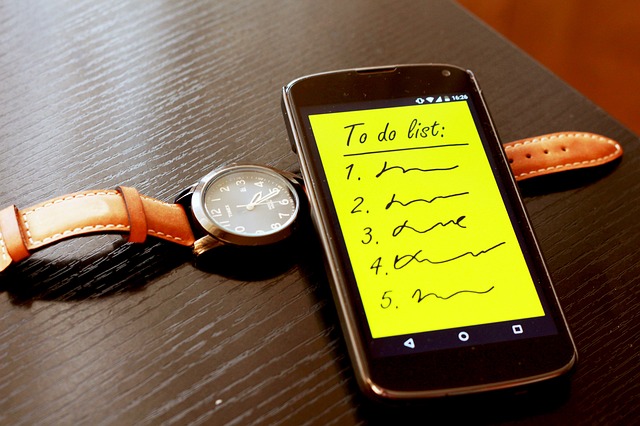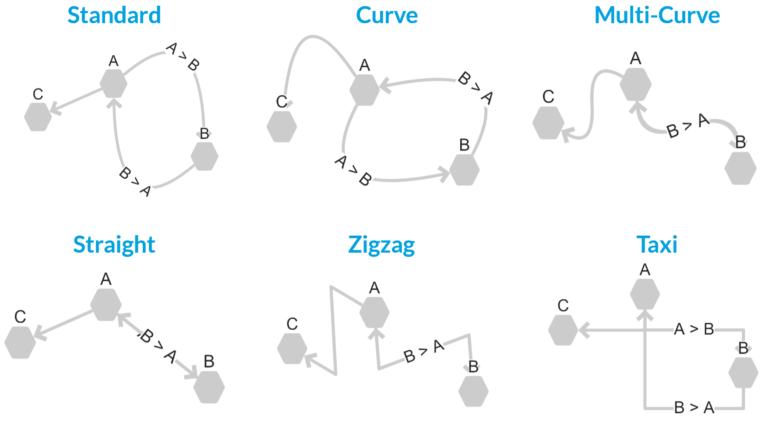
As much as we may wish the human mind was a machine, a super-computer capable of processing continuous data streams, we are, alas human. This means we are bound by attention spans, environment, and the availability of snacks.
Humans generally have about a 20 minute attention span. This applies to learning new things, working, processing, or unleashing creativity. The good news is after our mental capacity begins to slow, a short break can reset the timer. Once refreshed, we are able to dive back into our work or study with fresh eyes.
Unfortunately, most individuals’ time management processes clashes with natural biology instead of working seamlessly to maximize productivity and reduce burnout. In this article we are going to look at a better time management system, the practical steps to implement, and the thought process to break down large projects and chose the right tasks.
If this sounds good, you’re in the right place! We are about to dive into the power of the Pomodoro technique with easy to implement tips and proven methods to turbocharge your productivity.
The Pomodoro technique is a practical time management tool used to maximize mental capabilities, specifically around our natural attention span. The Pomodoro technique’s success spans industries, and helps individuals in all careers accomplish their goals and stay focused on the right tasks, at the right time.

Ready? Let’s Dive in!
The Pomodoro technique involves focusing on one task for an uninterrupted 25 minute work session followed by a 5 minute break. The 25 minutes allows enough time to get into a session and capitalize on that 20 minutes of focused attention. The 5 minute break allows for a mental reset, refreshing you for the next session to come. One 25-5 set of a focused work session and then a break is called a ‘Pomodoro’.
Every four Pomodoros (~2 hours), treat yourself to a longer break, ideally somewhere between 15 and 20 minutes. This allows the mind to reset, rest up, and focus on something new. During this longer break, go make lunch. Take a walk, do some push-ups, or whip out the knitting. Whatever helps you find life perspective and re-center around your happy place.
The Pomodoro technique is not a flash-in-the-pan process but has been refined for decades. Francesco Cirillo is credited with developing the Pomodoro technique in the late 1980s. Cirillo named the technique after the tomato-shaped kitchen timer he used as a university student (pomodoro is Italian for tomato). What started off as a practical method for Cirillo to stay on task is now used by more than 2 million people around the world.
The Pomodoro Technique:
- Identify your task
- Set a timer for 25 minutes
- Focus on your task until the timer goes off
- Check off a successful Pomodoro session!
- Take a quick 5-minute break
- Take a longer break (15-20 minutes) every 4 Pomodoros
Sounds simple right? There are several ways that you can take this technique from good to great. Keep reading for the “why”, the “how-to”, and the “what to do when…”.
The “Why” of the Pomodoro Technique
Let’s breakdown the benefits of the Pomodoro Technique in your work or study process:
- Satisfaction of Accomplishment: You completed a Pomodoro, well done! Cue dopamine release and the satisfaction of a job well done. A Pomodoro takes a bite out of any project, and that is an accomplishment in itself. This can ease anxiety around large projects and create a clear sense of progress.
- Reduced Procrastination: Procrastination prevents the best of us from getting anything accomplished. The Pomodoro technique helps you gain momentum by committing to working for clearly defined periods of time. If you feel like 25 minutes is too much to start, try committing to 10 or even 5 minutes to start. You might be surprised at your momentum once you get going.
- Maximized Impact: Since the Pomodoro technique helps you break down your time into blocks, you can plan out your time more effectively. You can designate time on your calendar for each block according to how many Pomodoros you estimate it’ll take you to complete a task. These blocks can be shifted to plan a week and adapted for a rapidly changing work schedule.
- Reduced Interruptions and Distractions: Since you know that you’re working in intervals, you can put your smartphone on Do Not Disturb mode to avoid outside distractions. You might consider various tools to avoid checking your phone, such as Forest which grows a virtual arboretum while you are staying focused.
- Bust Multi-tasking Spirals of Doom: Multi-tasking prevents you from working on your goals with a singular focus. With the Pomodoro technique, you’ll dedicate more mental energy to one task at a time.
Prof Tip: How do you eat an elephant? One bite at a time! Pomodoros help take a bite out of any project.
The Pomodoro technique is so powerful because it supports any project, working wonders on everything from writing essays and office work, to cleaning your home, and filing taxes. No matter the project, you can count on the Pomodoros to help stay focused and reduce mental fatigue.
How To: Pomodoro Tasks

Breaking your projects down into Pomodoros
Breaking a project down into its constituent pieces is not easy. Entire careers built around the process, and numerous laws the phenomena of humans general inability to plan projects well, like Hofstadter Law, the planning fallacy, and Parkinson’s Law. Experts get it wrong all the time, and even have a hard time determining how much work one individual can accomplish in any given period of time.
The Pareto principle, or 80/20 rule, states “roughly 80% of consequences come from 20% of the causes.” This applies to just about everything, from vegetable plant productivity to wealth distributions.
The Pareto principal also applies to projects. Some of a project’s tasks will be more important than others, and are more valuable. These tasks should be first identified, and then prioritized on your task list.
The trick is to define the important pieces, and then attack those components before moving on. As the adage goes, “A plan is nothing, but planning is everything.” Take some time to plan out the project, go through the mental exercise of extracting the key tasks and attack the sub-components, one bite at a time.
Breaking projects into Pomodoro-sized tasks takes practice. Don’t be surprised if you initially under, or overestimate, how long a task will take. Note how your estimation was off and adjust future task estimations accordingly.
Prof Tip: For another method to distill the right priorities, check out the Eisenhower Matrix for a classic solution that weighs task importance against urgency.
One Pomodoro Means Focusing on One Task
Pomodoros help add discipline to move past the myth of multitasking, multitasking risks, and multitasking disadvantages. Simply put, all the research and evidence is stacked against multitasking: multitasking doesn’t work. Since multitasking destroys productivity, the more we can focus on a single bite of the elephant the faster we can finish our projects.
Your focused work session should keep your attention on one task at a time. If you have several small tasks to complete, complete them sequentially, fully devoting your attention to one task and completing it before moving on to the next. It can useful to batch smaller tasks in one session around a theme, such as answering emails from colleagues and emails to connect to new contacts.
How To: Pomodoro Breaks
Just as important as the focus sessions in a Pomodoro are the breaks in between sessions. Breaks recharge the mind, increase creativity, and actually help us increase productivity.
To get the most out of our breaks, let’s look at the best ways to recharge between productive work sessions.

Not All Breaks are Created Equal
We often think about work and breaks as binary: any non-work time is a break. While technically true, some breaks will recharge us mentally and physically: these recharge breaks are the ones we want!
For example, some of the following can work very well:
- Eat a healthy snack
- Do some yoga or stretch
- Take a walk
- Get the blood flowing with some light exercise
- Change the scenery
- Engage in a creative or artistic outlet
- Chat with a friend
- Play a game
- Meditate
Emails should get their own pomodoros, generally a break isn’t enough, and usually they aren’t very restful.
Prof Tip: Be sure to use a timer! Breaks can easily stretch out longer than intended, educing the effectiveness of the Pomodoro technique.
Each person may have different affinities for recharge activities, everyone is unique! Keep in mind, time of day, mood, and energy levels will also vary, and can change which type of break is best. Mornings might mean a break for tea, while afternoons might mean a short walk outside.
Prof Tip: Listen to your body and mind, try a few variations and see what works best. When a Pomodoro rhythm of work sessions and breaks syncs up, it unleashes a beautiful flow.
Breaks are NOT Wasted Time
Breaks are not wasted time. When you get on a roll, you might be tempted to skip breaks and power through. For some taking small rests can feel unproductive, but in reality these breaks are exceptionally productive. Breaks allow you to recharge your batteries, clear your mind, rest your body, and boost creativity.
Prof Tip: Don’t forget to give your eyes a rest from screens! The 20-20-20 rule works great: take at least 20 seconds every 20 minutes to look at something at least 20 feet away. Looking at something else helps the eyes relax, and reduces eye strain and overall fatigue!
Lastly, emotional balance is achieved when a quality cadence is found. As Marthe Troly-Curtin said, “Time you enjoy wasting is not wasted time.” Enjoy the breaks, and work will become more enjoyable as well.
Prof Tip: Quit before you are exhausted. The goal isn’t to Pomodoro for all of your waking hours. Aim for a reasonable 4-5 hours of intensely focused work per day.

What to do When…
…ideas distract you during a work session
It is inevitable: when time is blocked out a whole bunch of truly amazing, absolutely awesome, and simply revolutionary ideas will bubble forth. These are distractions. The red-herring of non-productivity.
This happens to everyone, as sometimes our brains don’t want to focus. The trick is brain-dumping these ideas so you can get back to productivity on your chosen task.
There are a few ways to do this.
1) Before the pomodoro session, write down any distracting thoughts, action items for later, or nagging things on the mind. This will help clear the air, and free up mental space.
2) Remove distractions. If that TV remote is a problem, pop the batteries and hide it in the freezer (well, maybe not. . . or maybe. . . ).
3) Let yourself jot down brief notes/ideas when in a Pomodoro. This is just to keep the idea from getting lost, or to stop your brain from fixating on something other than the task at hand.
Sometimes paper notes can work well, especially if the ideas aren’t worth holding on to long term. However, we think RamSync is the best option for Notes. It’s fast, secure, and permanent ensuring you can always come back to a thought and expand on it after the pomodoro!
Prof Tip: Give Pomodoros, and pre-session brain dumps, a try and watch your productivity soar!
… people interrupt your work session
We’ve all had those moments where our focused work session is flowing beautifully only to be abruptly halted by the dreaded “Hey, are you busy?”. People can intrude into our focused work sessions in many ways, through text messages, email notifications, or in-person.
Allowing these distractions to invade your work sessions is like trying to ride a bike and stopping every few minutes. Each stop requires you to pedal hard to regain momentum and start again, leaving you more exhausted than if you had just pedaled consistently.
Eliminate or reduce as many of these distractions as possible. Close your door. No texting and no emails. No social media, and no surfing the latest trends in graph database traversal techniques. If you can, put your phone out of sight, even its presence can be distracting.
Wearing headphones can often hint to others that you are focused on a task. For those who still break through the music and ask the “Are you busy?” question, it is perfectly okay to say “I’m finishing up a task, can I come find you in 15 minutes?”. It’s a polite response that still prioritizes your own focused work time.
Prof Tip: Consider joining a Pomodoro group to leverage a community and support group. One such amazing academic and student group, the Knights of Academia often coordinate Pomodoro Sessions (Pom Raids!), supporting and encouraging each other in reaching their goals.
Tying it All Together
Quality, distraction-free time focused on specific tasks can truly work wonders on taking bites out of projects and goals of any size.
The Pomodoro technique is a tool, and like any tool has a time and place for use. While scheduling can help add focus and traction to goals, life is more than a series of Pomodoros. Resist any urge to slice a 24 hour day into 8 hours of sleep and 16 hours of straight Pomodoros. Aim for somewhere between 10 to 20 Pomodoros a day. Realistically, anyone who can devote 12 solid Pomodoros to their work and goals per day is doing very well.
Prof Tip: Sometimes, 25 minutes isn’t enough to immerse fully into a deep work session. For these situations, Pomodoros in the 40-50 minute range are often ideal. Adjust your break times to around 10 minutes to balance out the longer cycle.
Every day we can take the small steps toward progress, to drive just a little bit of positive action. They say a journey of a thousand miles starts with a single step, and as Dr. Christina likes to say, “The best way to eat an elephant is one bite at a time.”

Practical Organized
Leveraging Pomodoros will ensure you have a great system to manage time and stay on task. To support productivity, you may also want to consider a digital note tool to keep all your work organized! That’s where RamSync comes into play.
Never lose another thought or idea with RamSync. You can quickly organize everything you’re learning for easier recall and improved creativity.
Unlike other note software or Zettelkastens, RamSync is simple, intuitive, and designed by a university researcher.
Do you have questions about what RamSync can do for you? Send us a note, or sign up for the beta release! We’ll get back to you quickly.
Learn More
Distractions busting your Pomodoros? Read more about How to Overcome Your (Checks Email) Distraction Habit







